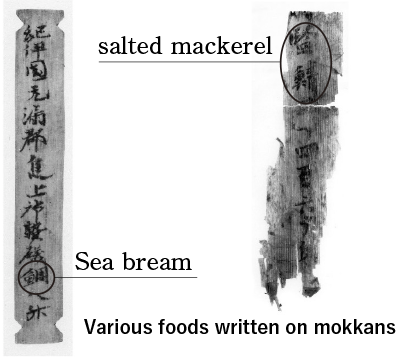|

01
Nara Food Culture
Japan’s food culture roots began in Nara―Nara is the root of Japanese food culture.
| |
Yamato (the ancient name of Nara Prefecture) has flourished as the center of Japanese culture since ancient times. Starting in the 7th century, various goods were brought to the capital of Nara from all over the country. Exchanges with the Korean Peninsula and China were also active, and monks, scholars, and engineers who came from China introduced continental culture. Food culture is one of them. Food was brought in from all over Japan, and vegetable and fruit seeds native to Central Asia and Europe were also brought to Yamato. It then spread from Yamato to all parts of Japan. Sake and tea are good examples of things that were introduced from the continent, developed in Yamato, and spread throughout the country. Although the capital eventually moved from Nara, culture such as Buddhism and art remained, and a unique food culture was developed by temples, shrines, and local people. This is the root of Nara's food culture, which is passed down to this day. It is also the root of Japanese food culture. Cheese, shaved ice, and manju(sweet bum) all originate from Nara.
|
|

02
The capital of Nara
was the capital of food
Ingredients from all over the country gathered in the capital of Nara,
and food culture spread throughout the country.
| |
People with various knowledge and skills gathered in the capital of Nara from all over the country and from continents such as China. The envoys brought continental culture back to Nara. In this way, various people introduced various food cultures, which then spread throughout the country. The capital of Nara was also the food capital of Japan and internationally.
One of the historical materials that tells this story is Mokkans(wooden tablets). Mokkans were tags for goods brought to the capital of Nara. This records the various foods that were brought to Nara from all over the country. For example, the names of various fish such as salmon are written on the mokkans. Even Nara, which had no sea, was properly connected to the sea through roads that transported goods and food.

|
|

03
food continues to beavailable in Nara
Delicious food continues to be available in Nara
“Eating delicious food” and “avoiding hunger”
are the driving forces behind food culture and human life.
| |
Since ancient times, people have devised various ways to prepare food. There are two ways to do it. One is to ``eat deliciously,'' in other words, a focus on ``taste,'' and the other is to ``make food last longer,'' in other words, to avoid starving. This is still true today, but it was also very important to people in the past.
These two measures were taken in Nara as well. In particular, the aristocrats of the capital seemed to spare no effort in making delicious food even more delicious. In order to bring food from all over the country to the capital, and to ensure that delicious food was always available, people at the time devised ways to make it last longer and to preserve it. Typical examples of this were salting and drying fish in the days when freezing technology did not exist. Fermentation and purification are the combination of these two techniques. These two methods are ways to preserve food, and at the same time, they are ways to make it more delicious. This requires knowledge and skill. In Nara, these two types of innovations have been combined in various ways to create a unique food culture that has continued to be delicious throughout the ages.
|
|
Food culture of Nara is colored
by three preserved foods
| |
Examples of fermentation are Narazuke and kaki leaf sushi, and examples of purification are Yoshino hon-kuzu. These three preserved foods color food culture of Nara which continues to be delicious even today.
|
|
|